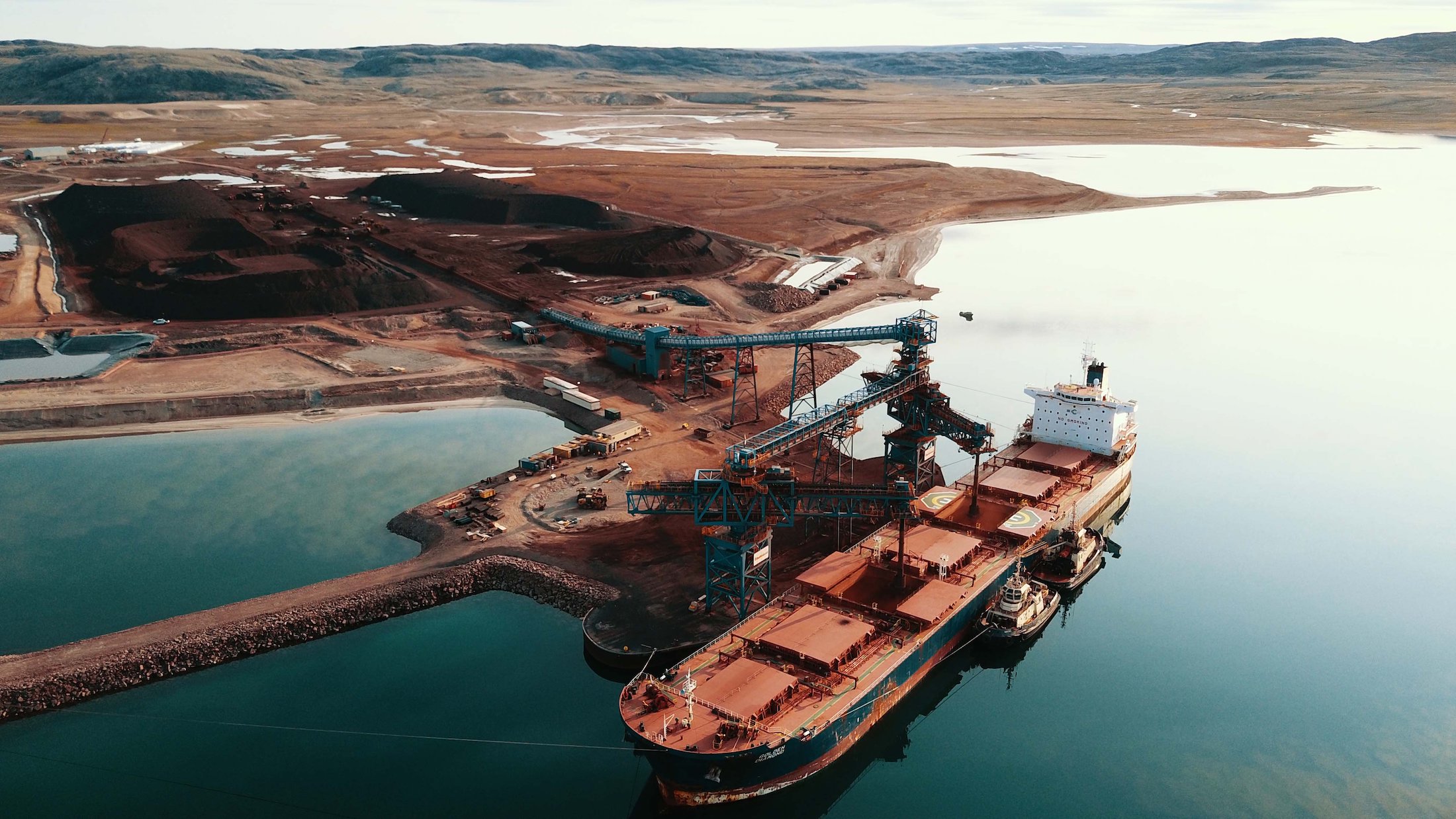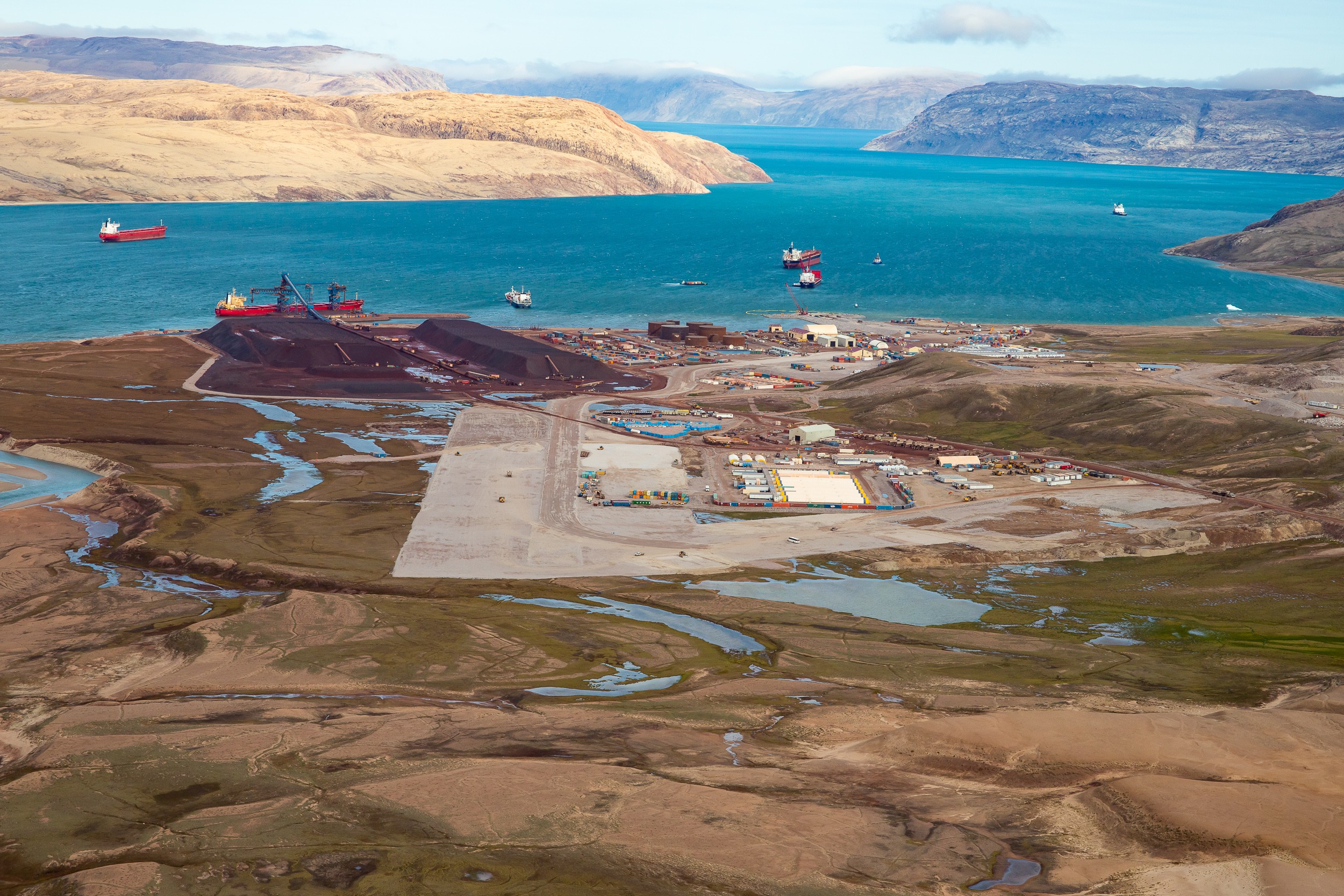
Rocky Mountain coal mine in Alberta takes next step to expansion
In Alberta, a massive open-pit coal mine near Jasper National Park is hoping to expand...
Shipping traffic linked to Nunavut’s Mary River Mine has increased exponentially and the noise could be adversely affecting narwhals, according to a new study.
The study, conducted by the Scripps Institution of Oceanography in San Diego, found shipping in Milne Inlet increased 583 per cent between 2015 and 2019. In 2015, there were 40 project-related transits in the region; four years later, there were 243.
“That increase is probably on par with some of the most rapid increases in commercial shipping on the planet,” Joshua Jones, the author of the study and an oceanographer at the institution, told The Narwhal. “The noise from ships can overlap with or make it more difficult to hear sounds that the animals themselves produce to communicate with each other or use to navigate within their environment.”
And there could be even more shipping traffic on the horizon.

Baffinland is hoping to double the amount of iron ore it ships from its Mary River Mine under a proposal that’s being reviewed by the Nunavut Impact Review Board. Photo: Oceans North
Baffinland, which opened the Mary River Mine on Baffin Island in 2014, is now looking to double its capacity under a second phase of development, which is under review by the Nunavut Impact Review Board. Under Phase 2, Baffinland is proposing 176 voyages (or 352 project-related transits) for ore carriers between July and November each year.
Baffinland is currently permitted to ship six million tonnes of iron ore from its port on Milne Inlet, just west of the community of Pond Inlet, located on Eclipse Sound. The company wants to produce 12 million tonnes of iron ore per year and construct a 110-kilometre railway to move that ore from mine to port (it currently uses a tote road for that purpose).
The proposed increase in shipping in the area “raises alarms” because impacts on narwhal haven’t been studied enough, said Christopher Debicki, vice-president of policy development and counsel for Oceans North, a charity that helped fund the Scripps study.
“It’s grossly premature to come before an impact review board and propose to double or, as we suspect, triple shipping volumes out of this region,” he said.
Oceans North submitted the study to the review board on Jan. 18, ahead of public hearings into the expansion project.
Inuit hunters, who call themselves Nuluujaat Land Guardians, say Baffinland’s proposed expansion project will severely impact animals they rely on for subsistence, including narwhals, Clyde River Mayor Jerry Natanine told The Narwhal.
“Right now, we’re saying that the expansion project should not go ahead,” he said. “Considering the mine is already affecting the area too much, we have to figure out how to make sure there’s less effect, less noise in the area, so that the whales can come back and so that people can continue their traditional practices.”
On Feb. 4, two days before the public hearings adjourned until April, Inuit hunters blocked a tote road and airstrip at the mine, holding their ground for one week until a temporary injunction was issued. As reported by Nunatsiaq News, Baffinland estimated the blockade cost it $14 million.
Natanine said Inuit have been raising concerns about narwhals for years, adding the whales are increasingly exhibiting signs of ill health. He believes high volumes of shipping traffic are to blame.
“Hunters that caught some narwhals said they were so stressed that they hardly had any blubber on them,” he said. “They were very skinny. Not even edible.”
Amanda Hanson Main, technical adviser for the Mittimatalik Hunters and Trappers Organization, which is based in Pond Inlet, Nunavut, told The Narwhal hunters are seeing fewer calving and tusking events in Milne Inlet.
“They’re harder to hunt because they’re already stressed about the shipping,” she said.

As shipping traffic to the Mary River Mine increased, so too did narwhals’ cortisol levels, according to a recent study. Photo: Baffinland
A recent study, which is soon to be published in the journal Arctic Science, found that as shipping to and from the Mary River Mine increased, so too did the levels of cortisol in narwhal blubber. Between 2013 and 2019, when shipping significantly increased in the area, cortisol — a stress response hormone — more than doubled in narwhals compared to pre-mine years, according to the study.
However, the study found there are several factors at play.
“Increased vessel traffic, changing ice conditions, altered Arctic food webs, increased predation pressure from killer whales and cumulative impacts from these sources likely all contribute to increased stress levels for narwhals,” the authors conclude in the study, adding that there’s a need to continue monitoring the animals.
Some Inuit organizations aren’t completely opposed to the company’s expansion plan as many Inuit are employed by the mine.
The Qikiqtani Inuit Association — the landlord of the Qikiqtaaluk Region, which allows Baffinland to operate there through a commercial lease — signed an Inuit Certainty Agreement with the company on June 16. The agreement puts forward certain benefits such as Inuit employment and environmental monitoring efforts throughout the mine’s 21-year life.
In 2016, as part of the Scripps study, Jones placed two underwater microphones in Eclipse Sound to determine how the soundscape changes when ships pass over it and how that may affect marine mammals, including narwhals and ringed seals, both of which are harvested by Inuit for subsistence.
To do that, he looked at the frequencies narwhals and ringed seals use for communication and compared them with noises emitted by ships.
The study found that vessel noise can affect both mammals depending on how close they are to the ships. As ships get close to narwhals, they emit noises at frequencies that start to interfere or “overlap” with the high-pitched noises narwhals use to communicate and navigate. “If they get close enough, they emit sounds that are loud enough that they could be causing behavioural disturbance in narwhals,” Jones said.
The farther away a ship is from an animal, the lower the pitch of sound it produces. When the noise reaches a lower decibel level, it can impede communication patterns of ringed seals, which make deep barks and grunts.

Vessel traffic in Milne Inlet increased 583 per cent between 2015 and 2019 — on par with some of the most rapid increases in commercial shipping in the world — making it an important place to study impacts on narwhals. Photo: Baffinland
Ship noise can impact narwhals and ringed seals when vessels are within a few kilometres to more than 30 kilometres away, Jones said.
Jones found that some ships are noisier than others. The loudest sounds came from fuel and chemical tankers, along with an ice breaker the mine uses to chart a course through the sea ice as it begins to melt. (Shipping occurs between mid-July and late October, when there is the least ice present.)
Jones emphasized that the overlap of ship and marine mammal frequencies is predicated on a lot of guesswork and more research is needed to fully understand the extent of disturbances.
One of the key limitations, he said, is that they don’t have a measurement for narwhal hearing.
“There is no hearing test in the world for narwhal, so we’re stuck with some guesses.”
However, there’s no denying the sheer volume of ships in Eclipse Sound is “remarkable,” Jones said.
“It probably makes Eclipse Sound and Milne Inlet one of the most important areas in the world to try to understand the effects of changing shipping traffic on marine mammals because that change is happening so rapidly,” he said.
Heather Smiles, manager of stakeholder relations with Baffinland, told The Narwhal the company “has some of the most extensive and conservative mitigations for shipping in Canada, and certainty in the Arctic.”
According to a presentation Baffinland submitted to the public hearing, there’s no potential for temporary or permanent acoustic injury on marine mammals.
The report states “multiple lines of evidence indicate narwhals will be disturbed by vessel-based sound,” but those effects are “short term and localized.”
To mitigate possible disturbance, the company intends to implement speed restrictions and limit the number of transits in heavy ice, according to the document.
Get the inside scoop on The Narwhal’s environment and climate reporting by signing up for our free newsletter. A $335 million funding commitment to fund...
Continue reading
In Alberta, a massive open-pit coal mine near Jasper National Park is hoping to expand...

A trade war could help remake B.C.’s food system, but will family farmers be left...

First Nations are leading efforts to make sure lake sturgeon can find a home in...
